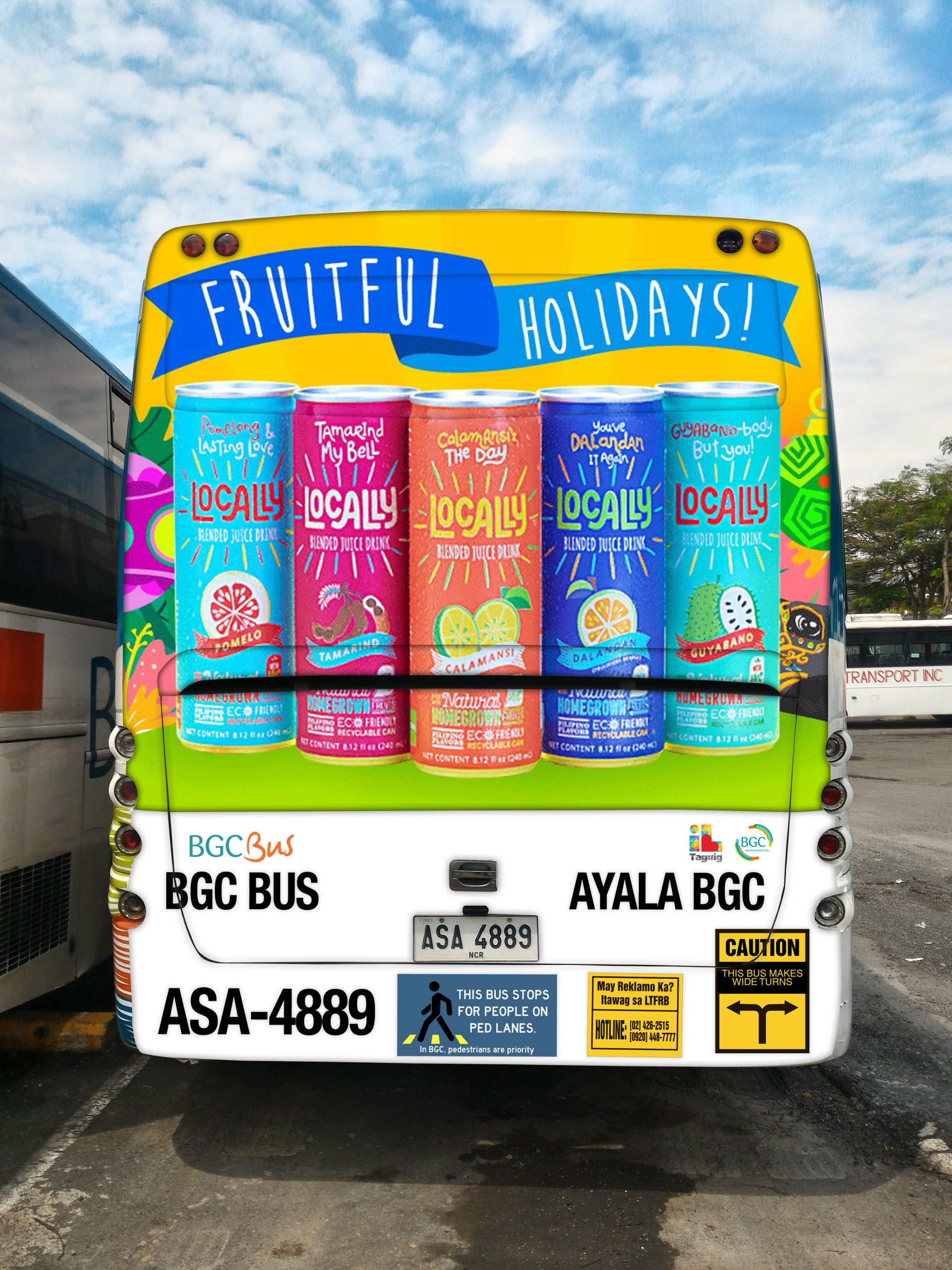Enhance Brand Name Get To with Transit Advertising Philippines
Enhance Brand Name Get To with Transit Advertising Philippines
Blog Article
Understanding the Role of Transit Advertising And Marketing in Enhancing Brand Name Exposure and Customer Interaction
Transit advertising and marketing has become a pivotal component in the marketing landscape, providing unique possibilities for brands to raise their presence and engage customers effectively. With the capacity to get to a diverse and restricted target market during their day-to-day commutes, these marketing techniques are not simply about exposure; they have to do with producing significant connections with prospective consumers. As we discover the multifaceted advantages and cutting-edge methods within transit marketing, it ends up being important to take into consideration how these elements collectively influence consumer perception and actions, elevating questions about their long-term effect on brand loyalty.
Interpretation of Transit Marketing
Transit marketing refers to the practice of promoting products, solutions, or brands via advertisements positioned in and around public transport systems. This kind of marketing includes a variety of placements, including posters on buses and trains, electronic screens at transit terminals, and covers on the outside of cars. It intends to reach a varied audience, exploiting on the high foot web traffic linked with public transportation.
Transit advertising and marketing is tactically placed to catch the interest of travelers, that often invest considerable time traveling or waiting. By integrating promotions into the everyday regimens of individuals, brands can create a long-term perception and foster brand name acknowledgment. The medium is especially efficient in city settings, where mass transit is a primary mode of travel.
In addition, transportation advertising and marketing can help with local targeting, allowing services to get to certain demographics based on transportation routes and station places. As urban populaces grow and using public transport increases, this marketing method has actually gotten importance as a crucial part of integrated advertising strategies. The vibrant nature of transportation marketing, integrated with its capacity to engage consumers in a captive setting, emphasizes its significance in contemporary marketing practices.
Benefits of Transit Marketing
The efficiency of transit advertising hinges on its capability to deliver a plethora of advantages to brands looking for to improve presence and engagement. One of the main advantages is the extensive reach it provides; transit ads can successfully target diverse demographics across urban locations, getting to both pedestrians and commuters alike. This wide exposure substantially enhances brand name understanding.
One more advantage is the high regularity of impacts. As transit cars follow recognized paths and quit at multiple locations, they create repeated exposure that strengthens brand messages. This regularity fosters familiarity, which is critical in consumer decision-making.
Transit advertising is likewise economical compared to other media platforms. Provided its large reach and possibility for high impressions, brand names commonly experience a reduced cost per thousand impacts (CPM), optimizing their marketing spending plan.
In addition, transit ads can create a sense of community link. By straightening with local transit systems, brand names can resonate with regional target markets and promote a sense of neighborhood pride. This localized technique improves brand loyalty and involvement, making transportation marketing an engaging option for services aiming to solidify their presence in the marketplace.

Effective Strategies for Transit Campaigns
To take full advantage of the effect of transit campaigns, brands need to take advantage of calculated planning and execution customized to their target market. First, recognizing the market attributes of the target market using public transit is essential. This allows brand names to produce individualized messaging that resonates with potential consumers.
Next, choosing the best transportation tools is important. Whether making use of bus wraps, train posters, or electronic displays, each tool has unique benefits that can improve visibility. For circumstances, dynamic visuals on bus covers can draw in focus, while electronic advertisements can be updated often to show prompt promotions.
In addition, integrating a natural branding strategy throughout transportation systems guarantees consistency and enhances the brand name's identity. Using unforgettable taglines and eye-catching layouts will certainly reinforce brand name recall among travelers.
By using these strategies, brands can properly harness the potential of transit advertising and marketing, fostering better recognition and connection with their target audience. Ultimately, a well-executed transportation campaign can see here now drive considerable development in brand name presence and customer involvement.

Determining Influence and Interaction
In evaluating the effectiveness of transportation marketing campaign, precise dimension of impact and engagement is necessary for brands looking for to optimize their advertising and marketing approaches. Metrics such as reach, frequency, and perceptions supply foundational information to assess presence. Evaluating these aspects assists determine the number of prospective consumers are exposed to the promotions during their everyday commutes.
Involvement can be further determined with customer interactions, such as internet site web traffic, social media sites discusses, and straight feedbacks to calls-to-action featured in the ads. Using devices like QR codes or special Links can help with monitoring of consumer behavior straight connected to transportation projects. Surveys and feedback devices also function as important methods to gather qualitative data on customer assumptions and recall of the ad.
Additionally, progressed analytics and attribution models can associate transportation direct exposure with subsequent getting habits, providing insights right into the roi. By using a comprehensive approach that incorporates qualitative and measurable actions, brand names can create a nuanced understanding of their transportation marketing influence. Eventually, this data-driven method enables brands to refine their projects, guaranteeing they reverberate properly with target audiences and enhance overall brand name presence.
Situation Research Studies of Successful Projects
Successful transportation marketing campaign function as engaging examples of just how reliable strategies can raise brand name presence and engagement. Transit Advertising Philippines. One notable situation is the "I Love New York" campaign, which transformed the city's picture and brought in countless travelers. By using train advertisements, billboards, check here and bus wraps, the campaign created a strong, cohesive brand identification, leading to a substantial uptick in tourist and neighborhood organization patronage
One more excellent project is Coca-Cola's "Share a Coke" campaign, which leveraged transportation advertising to personalize the brand experience. By including popular names on marketing products across numerous transit platforms, Coca-Cola promoted a deeper emotional connection with customers, motivating them to share their experiences on social networks.
Furthermore, the "Got Milk?" project properly used public transport ads to reach a wide target market, enhancing the message of the relevance of milk in a balanced diet regimen. The campaign saw a quantifiable rise in milk usage in target demographics.
These case studies illustrate that when implemented thoughtfully, transit advertising can dramatically boost brand name exposure, foster consumer involvement, and drive measurable outcomes, demonstrating its important duty in modern advertising strategies. - Transit Advertising Philippines
Verdict
In conclusion, transit advertising and marketing offers as an important tool for enhancing brand presence and promoting consumer involvement. Ultimately, the capability to measure engagement and evaluate successful case researches underscores the efficiency of transit advertising and marketing in driving brand loyalty and customer interactions.
Transportation advertising and marketing has arised as an essential aspect in the marketing landscape, using unique that site opportunities for brand names to elevate their visibility and involve customers effectively.Additionally, transit marketing can help with localized targeting, allowing companies to get to details demographics based on transit paths and station areas.In examining the efficiency of transportation advertising and marketing projects, exact measurement of impact and engagement is vital for brand names seeking to maximize their advertising and marketing strategies.Effective transportation advertising projects serve as compelling examples of exactly how effective methods can boost brand name exposure and engagement.In final thought, transit advertising serves as a vital tool for enhancing brand presence and promoting consumer interaction.
Report this page